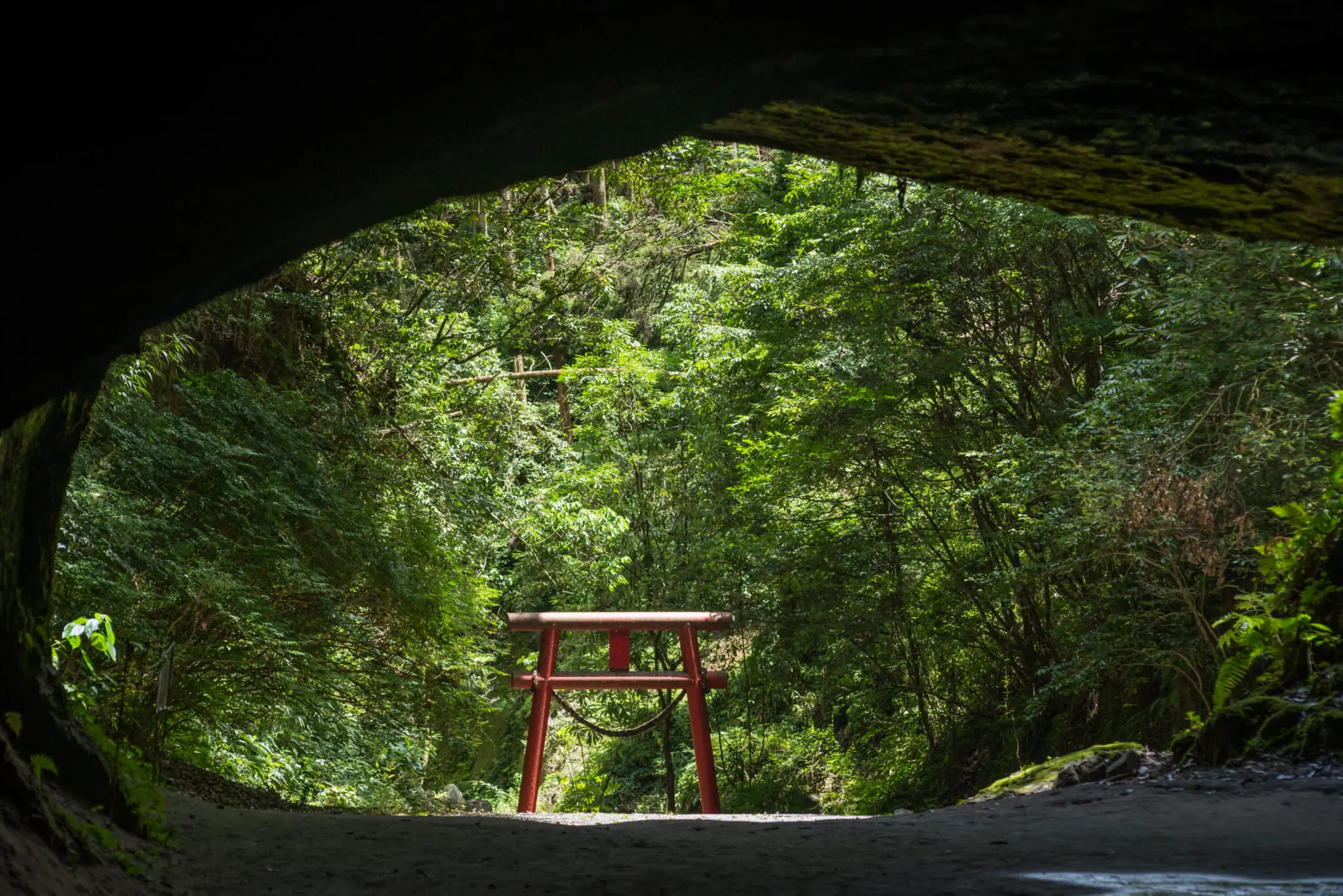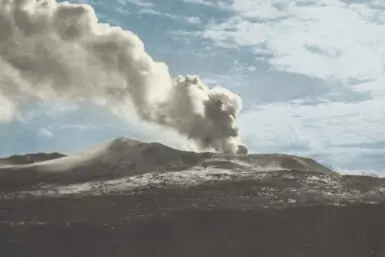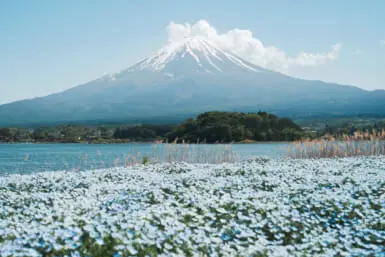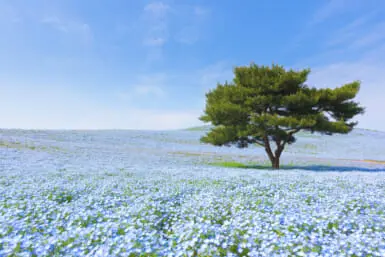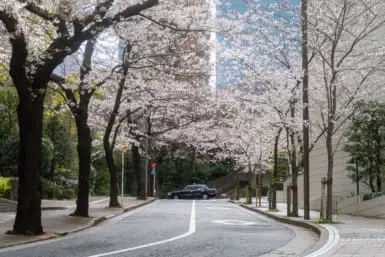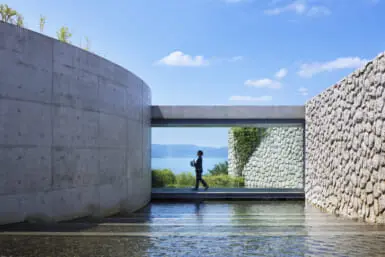Among Japan’s mountains, forests and religious sites lie “power spots” — places believed to be imbued with spiritual energy that can rejuvenate, inspire and bring good fortune. For travelers seeking to connect with nature and reflect on their inner lives, visiting these power spots can be a transformative experience. This guide will explore some of Japan’s most revered power spots, offering insights into their significance, how to get there and what to expect.

What Are Power Spots?
Power spots are locations where the Earth’s natural energy is said to be particularly strong. These sites can be natural formations such as mountains and waterfalls or man-made structures like shrines and temples.
The belief in power spots is intertwined with Shintoism, Buddhism and ancient Japanese spiritual practices, where nature is revered and considered sacred. Whether these power spots get their energy naturally, or from a strong belief from the collective is a bit of a chicken-or-the-egg question, but the awe-inspiring nature of these locations are tangible, and well worth visiting.
9 Must-Visit Power Spots in Japan
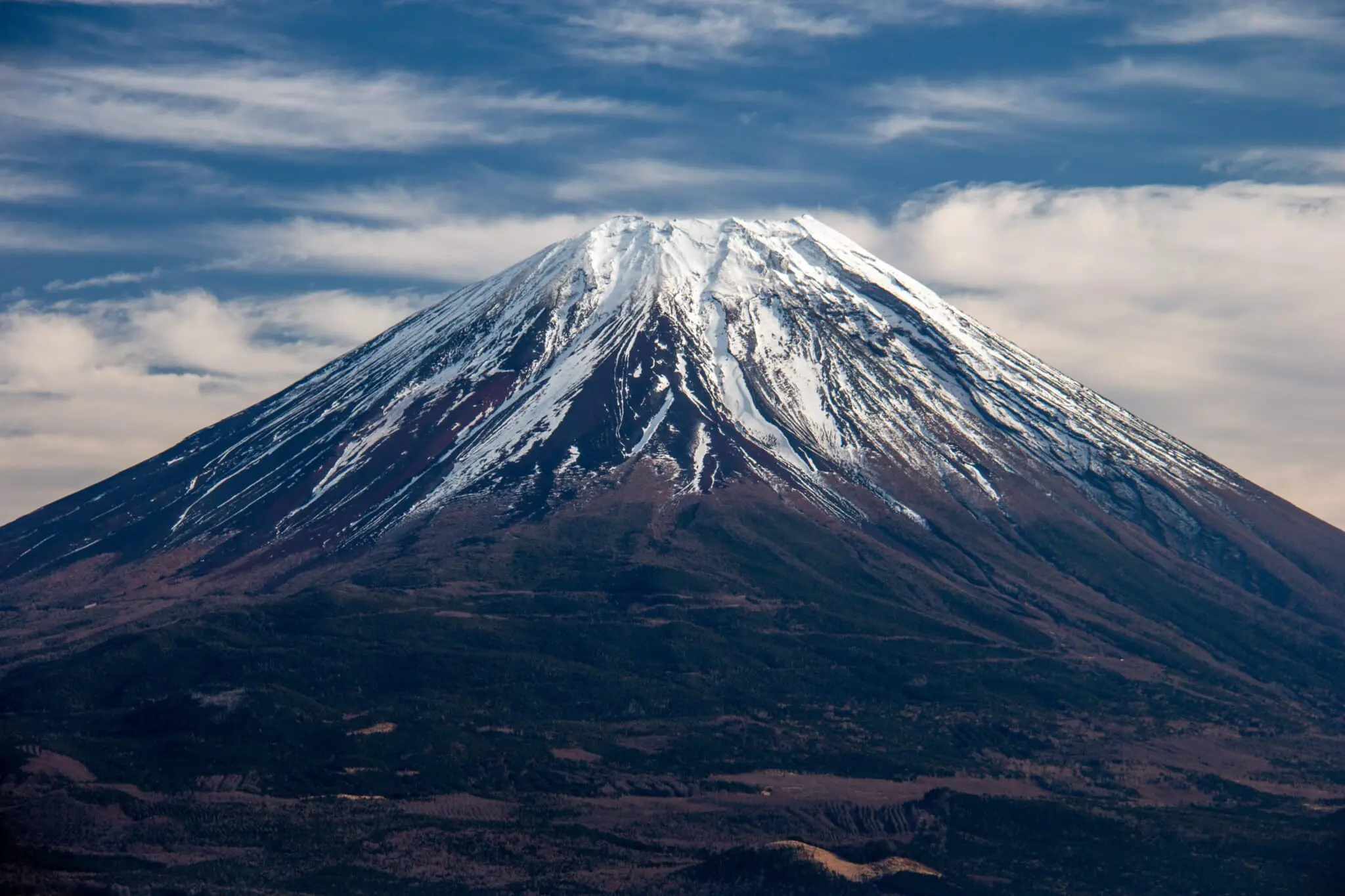
Mount Fuji
Mount Fuji, Japan’s iconic, highest peak, is a natural wonder as well as a powerful spiritual site. Its symmetry and dramatic beauty has been revered for centuries and recited in mythology, and has inspired countless poets and artists from ancient times to the modern age.
Significance
Mount Fuji is considered a sacred mountain in Japan. Many believe that climbing or being near it brings spiritual enlightenment. The surrounding area is dotted with shrines and lakes, enhancing its mystical atmosphere.
How to Get to Mount Fuji
If you are looking to climb Mount Fuji, go to the Fuji Subaru Line 5th Station, which is accessible via bus, train and car. The climbing season runs from early July to early September. For visitors wanting a less strenuous visit, take a trip to Kawaguchiko to enjoy the magnificent sight of the mountain alongside the Fuji Five Lakes area.
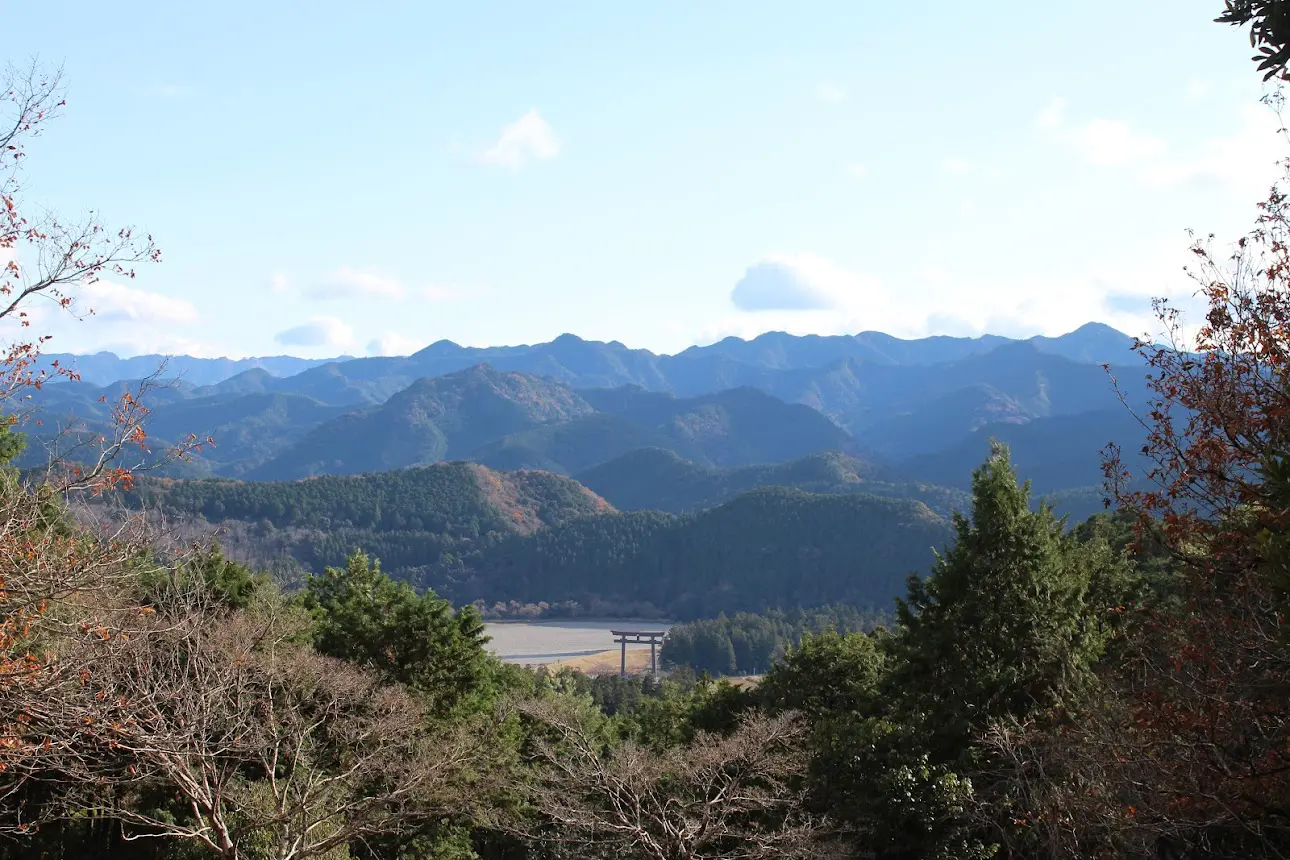
Kumano Kodo Pilgrimage Routes
The Kumano Kodo is a network of ancient pilgrimage trails located in the Kii Peninsula. Recognized as a UNESCO World Heritage Site, these trails connect three significant shrines: Hongu Taisha, Hayatama Taisha and Nachi Taisha.
Significance
Walking the Kumano Kodo is a fantastic hike, but it is also one of Japan’s most holy pilgrimages. The trail is connected to the mythology of Emperor Jimmu, the legendary first emperor of Japan, who was guided by the three-legged crow through the mountainous terrain. The lush forests, sacred trees and waterfalls along the route serve as a backdrop to this mystical and meaningful trek.
How to Get to Kumano Kodo
There are several starting points for the Kumano Kodo, which can be reached by train or bus from Osaka or Kyoto. There are various routes of differing lengths, making it suitable for both serious hikers and casual walkers.
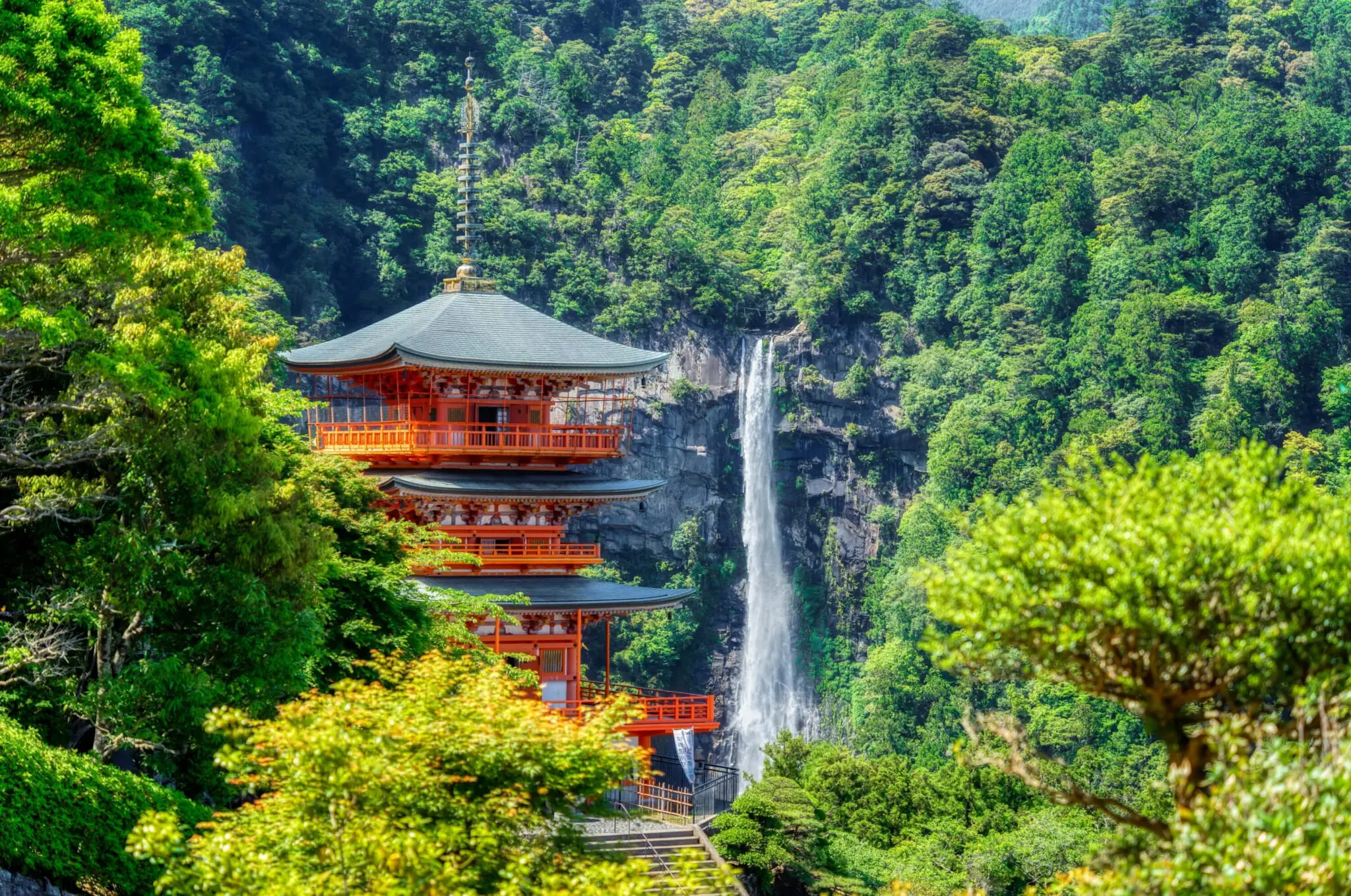
Nachi Falls
Whether you decide to walk the Kumano Kodo or not, consider visiting Nachi Falls if you are in the area. Located near Nachi Taisha Shrine in Wakayama Prefecture, it is Japan’s tallest waterfall, cascading an impressive 133 meters. The waterfall is a striking sight and a significant spiritual site.
Significance
Enshrining the god of Hiro Shrine, Nachi Falls is considered a deity in its own right and symbolizes purification and renewal. The breathtaking view, combined with the presence of the shrine, creates a powerful atmosphere that resonates with visitors.
How to Get to Nachi Falls
The best way to get to Nachi Falls is to take a bus from Kii-Katsuura Station. The waterfall can be seen within a five-minute walk from Nachi-no-Taki-Mae bus stop. The area around the waterfall is well-maintained, with walking paths that allow for a closer view.
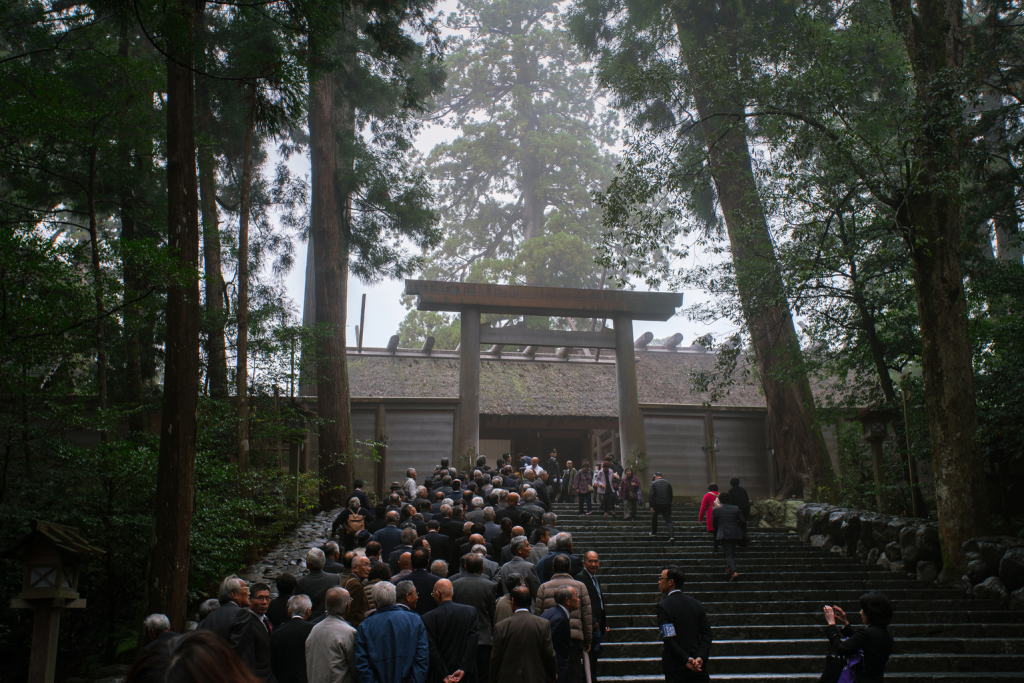
Ise Jingu
Ise Jingu, or Ise Grand Shrine, is one of Japan’s most sacred Shinto shrines, dedicated to the sun goddess Amaterasu. It consists of two main shrines, Naiku (inner shrine) and Geku (outer shrine).
Significance
The shrine is believed to house the holy mirror of Amaterasu, a symbol of the sun goddess herself. Located in Ise City of Mie Prefecture, Ise Jingu is considered the soul of Japan.
How to Get to Ise Jingu
The shrine recommends that guests visit the Geku first, followed by the Naiku. The Geku is a short walk or bus ride from Iseshi Station, and from there, you can either take a 10-minute bus ride or an hour-long walk to arrive at the Naiku.
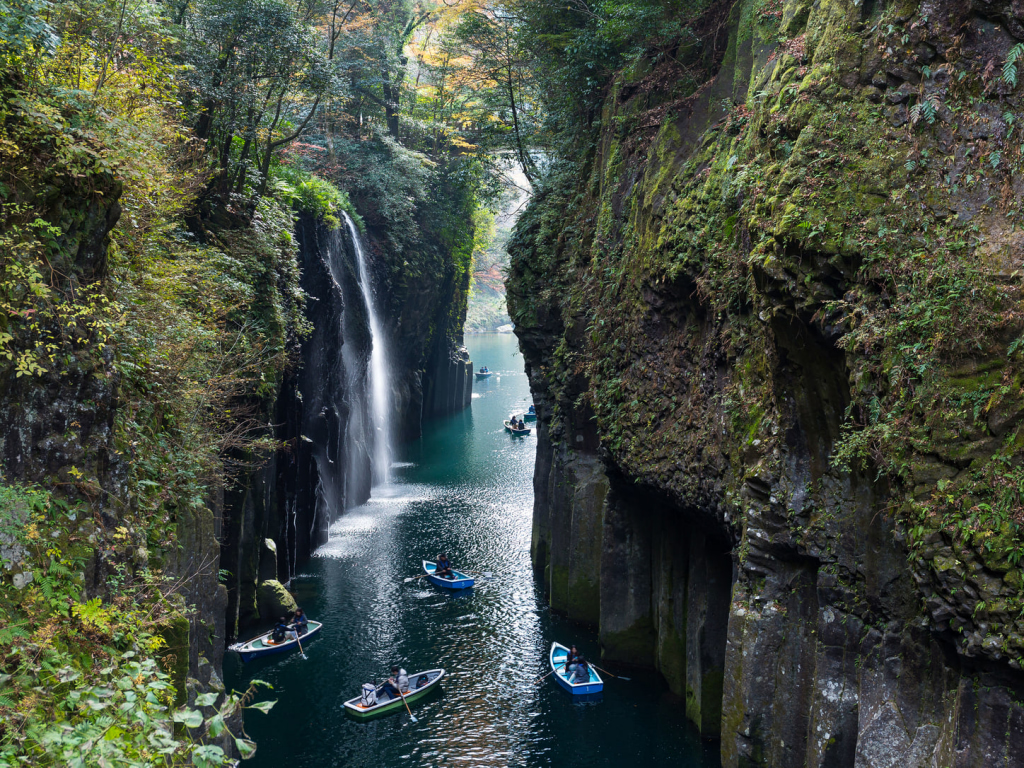
Takachiho Gorge
Takachiho Gorge, located in Miyazaki Prefecture, is a stunning natural formation carved by the Gokase River. It features dramatic cliffs, lush greenery and the mesmerizing Minainotaki Waterfall.
Significance
This gorge is rich in mythology and is said to be where the Shinto gods first descended. The trail along the gorge continues for about 1 kilometer and leads to the Takachiho Shrine.
How to Get to Takachiho Gorge
Takachiho Gorge is located about a 30-minute walk away from the Takachiho Bus Center. Many people opt to take a taxi or bike there. The gorge itself can be explored on foot, with several walking trails offering breathtaking views of the waterfall and surrounding cliffs.

Mount Koya
Mount Koya, a UNESCO World Heritage Site, is the center of Shingon Buddhism, founded by the monk Kukai (Kobo Daishi). This sacred mountain hosts numerous temples, including the famous Kongobuji Temple. Several temples on the mountain offer lodging, and it is also a popular site for those wanting to try shukubo (temple lodging).
Significance
Kukai is said to have entered his eternal meditation on Mount Koya. This holy mountain is also the last site of the Shikoku 88 Temple Pilgrimage. Protected by the spirit of Kobo Daishi, the mountain’s cemetery grounds, serene forest and several temples simmer with holy energy.
How to Get Mount Koya
Mount Koya is accessible by cable car and bus. After getting to the foot of the mountain, you can opt to take the cable car from Gokurakubashi or take the winding path via car or bus. Once on the mountain, it’s easy to explore the many temples and cemeteries by foot.
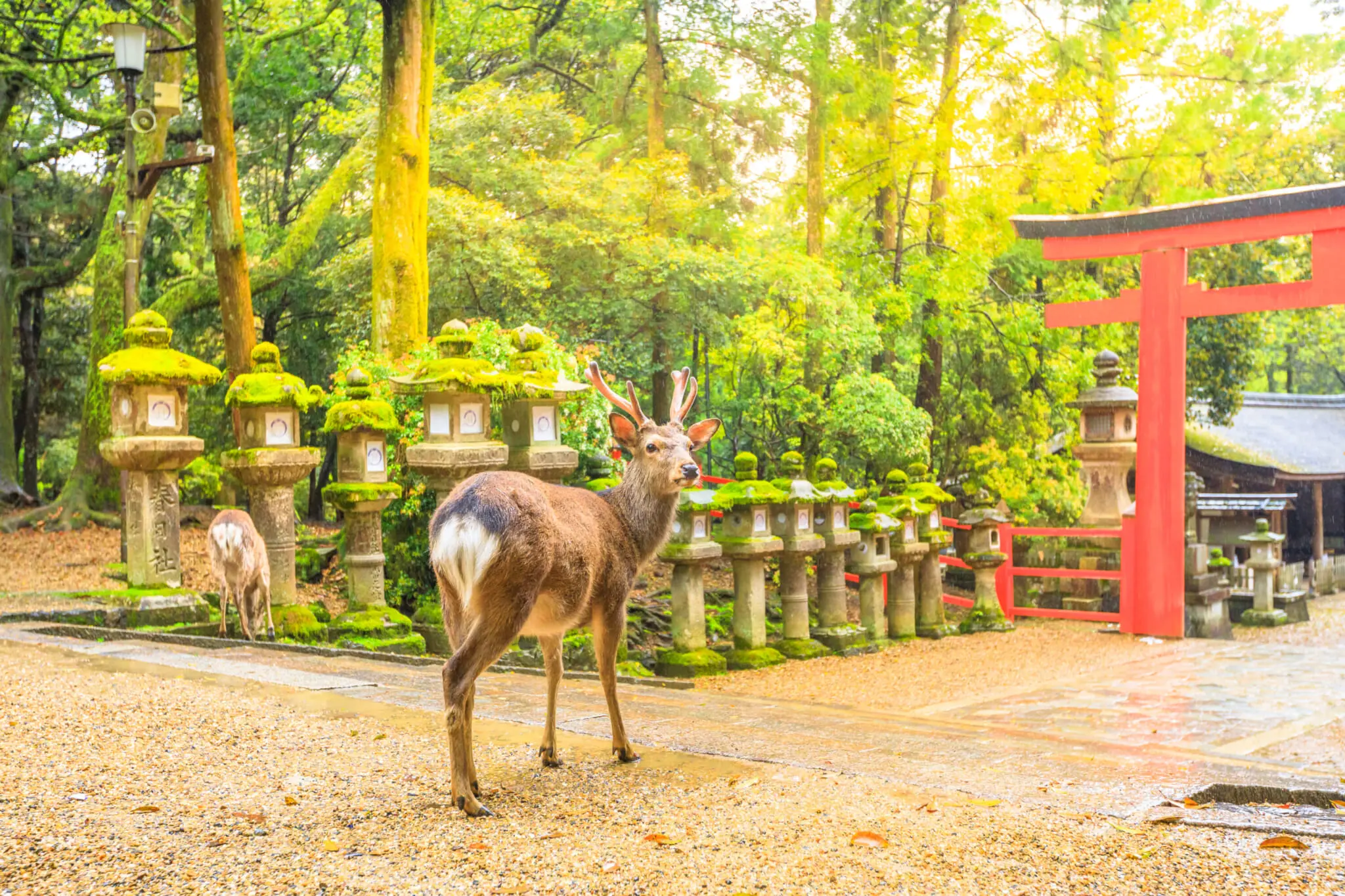
Nara Park
Nara Park, home to free-roaming deer, also houses the Todaiji Temple, famous for its giant bronze Buddha statue. This UNESCO World Heritage Site is a blend of nature and spirituality.
Significance
The park and its deer are considered sacred, embodying the spirit of the land. The deer are used to humans and get very close, bowing their heads, to the delight of animal-loving guests.
How to Get Nara Park
Nara is easily accessible by train from Kyoto and Osaka. The park is within walking distance from JR Nara Station.
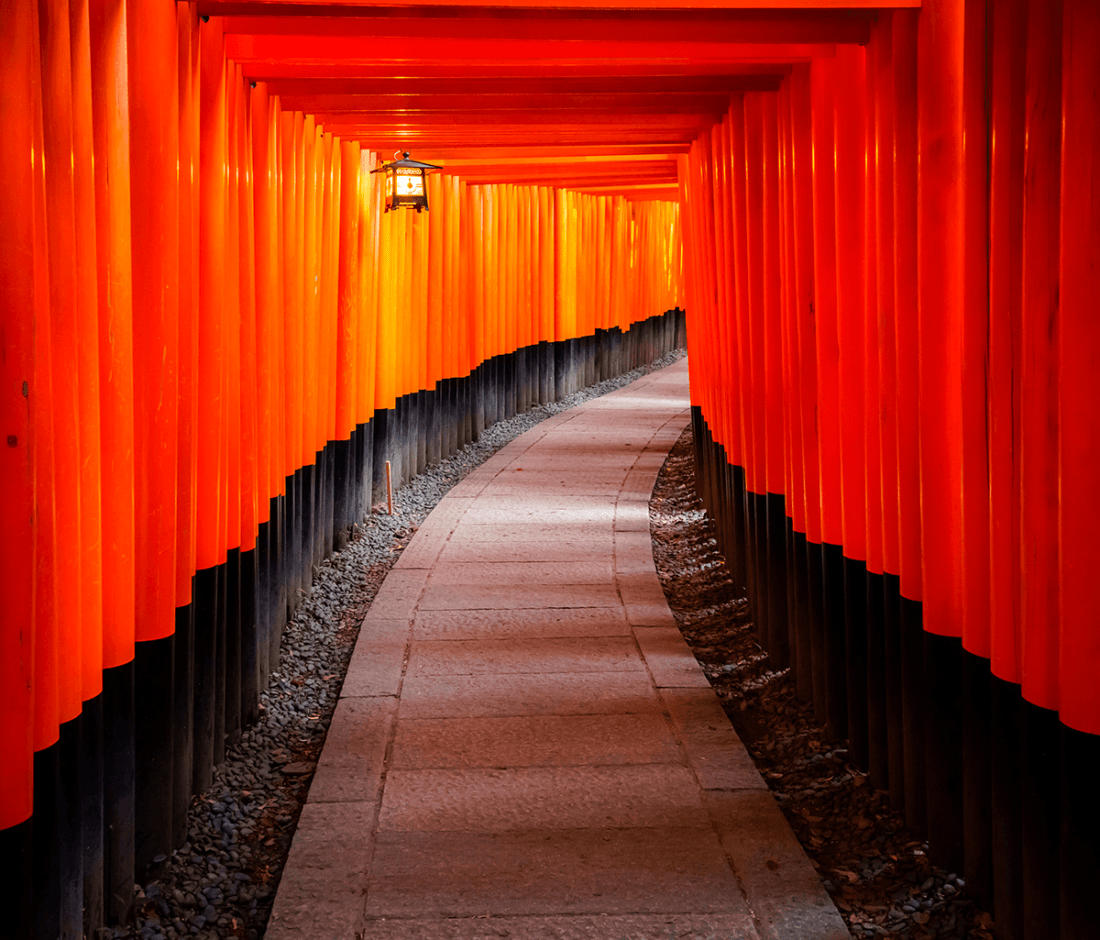
Fushimi Inari Taisha
Fushimi Inari Taisha, or Fushimi Inari Grand Shrine, located in Kyoto, is famous for its thousands of vermilion torii gates that wind up the mountain. The shrine is dedicated to Inari, the Shinto god of rice, and statues of Inari’s messenger, the fox, are all over the shrine grounds.
Significance
The torii gates symbolize the connection between the spiritual and physical worlds. Many believe that walking through these gates offers protection and prosperity. The torii gates wind up through the holy Mount Fushimi.
How to Get Fushimi Inari Taisha
Fushimi Inari Taisha is located right outside JR Inari Station and is a short walk from Fushimi Inari Station. They are both close to Kyoto Station and easily accessible.
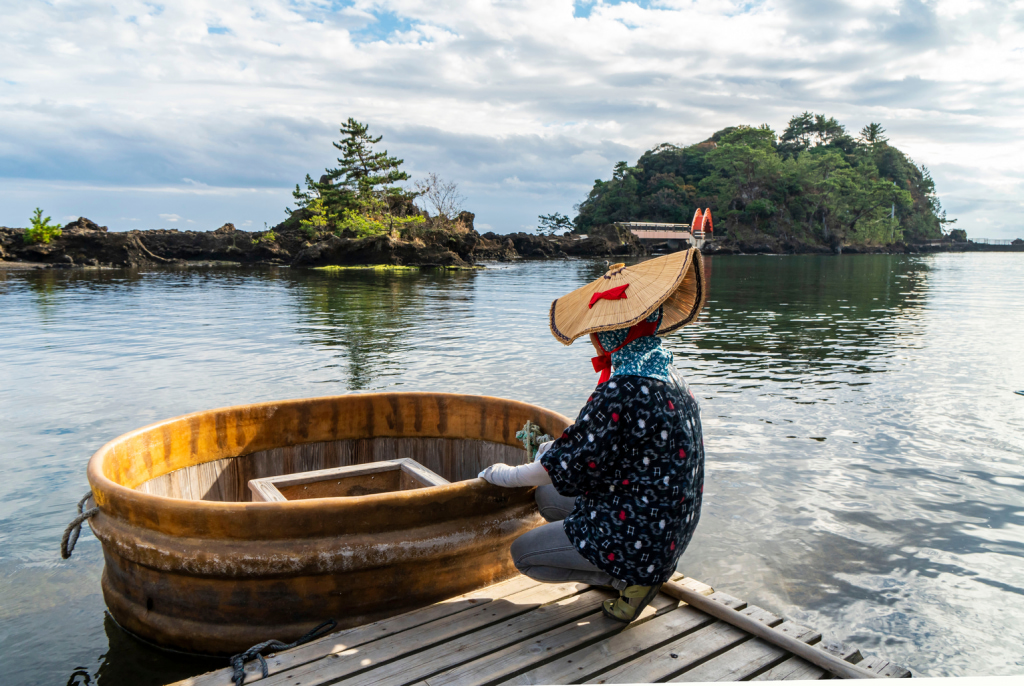
Sado Island
Sado Island, located off the coast of Niigata Prefecture, is known for having 280 kilometers of rugged coastline, beautiful ocean landscapes and historical significance as an island of exile of court nobles and intellectuals who criticized the imperial family or shogunate.
Significance
Sado Island is among the first islands mentioned in both the Kojiki (Record of Ancient Matters) and Nihon Shoki (Chronicles of Japan). The island is dotted with cultural sites, including the Sado Island Taiko Centre and the historic Sado Kinzan (gold mine).
How to Get Sado Island
Access Sado Island by ferry from Niigata Port. Once on the island, rental bikes or buses can help you explore its many spiritual sites and natural beauty.

